Evolutionary Ecology
The department of Evolutionary Ecology gathers complementary skills in behavioural ecology, population dynamics, population biology, community ecology, and methodology (statistics and modelling). The research done in the department aims at studying how animal species evolve in a changing world by understanding the causes of the evolution of traits, adaptations and interactions. For that, we consider different levels of organization from individuals to populations and communities. Because organisms cannot be considered isolated from other biotic factors, we consider pathogens but also competing species within communities.
We study how individuals adapt to their environments that are largely impacted by anthropic pressures, and how life history traits and behaviour evolve in response to these pressures. Although we mainly focus on phenotype, we more and more consider the mechanistic link between the genotype and the phenotype. We develop the theoretical framework of our discipline through a conceptual and modeling approach. In parallel, we test hypotheses that arise from theoretical predictions through experimental, comparative and observational approaches on different biological models (insects, birds, mammals). Experimental approaches are developed in the laboratory (insect model) and in natura (bird, insect and mammal models). Observational and comparative research is mainly concerned with vertebrates. Our approaches are also, and increasingly, interested in the mechanisms of adaptive responses. In addition to the classical approaches of demographic analysis and trait change, methods of ecophysiology, chemical ecology and molecular biology are used.
Our department hosts several long-term studies of wild populations of different species. These long-term studies offer a valuable way to understand how biotic and abiotic factors affect individuals’ life history traits, and the functioning of populations in natura. Five populations of mammalian species are thus monitored for several years (more than 40 years on roe deer, 30 on Alpine marmots, 25 years on cats, 16 years on zebras, and 20 years on impala). Two of our study sites (La Sassière in Vanoise National Park (Alpine marmots) and Hwange National Park) have been certified as “Site d’Etude en Ecologie Globale” (SEEG), and two (ZA “Hwange” and ZA “Antarctic and sub-Antarctic”) were certified as “Zone Atelier” by the CNRS.
The department of Evolutionary ecology is also largely involved in training activities. Lastly, we also have strong socio-economic relationships. Indeed, because we address questions of major societal interest (global warming, public health) we tightly collaborate with socio-economic partners (Office Français de la Biodiversité, Vanoise National Park, Hwange National Park in Zimbabwe, Office National des Forêts, etc.) and participate to general public and media events.
Publications
Display of 1591 to 1620 publications on 2449 in total
A semi-Markov model to assess reliably survival patterns from birth to death in free-ranging populations
Methods in Ecology and Evolution . 2 : 383-389
Journal article
see the publicationAge-related male reproductive effort in two mountain ungulates of contrasting sexual size dimorphism
Canadian Journal of Zoology . 89 : 929-937
DOI: 10.1139/Z11-062
Journal article
see the publicationWhen cats' ways of life interact with their viruses: A study in 15 natural populations of owned and unowned cats Felis silvestris catus
Preventive Veterinary Medicine . 101 : 250-264
Journal article
see the publicationLinking genetic diversity and temporal fluctuations in population abundance of the introduced feral cat (Felis silvestris catus) on the Kerguelen archipelago
Molecular Ecology . 20 : 5141-5153
Journal article
see the publicationMorphometric analysis of teeth remains from the El Harhoura 2 cave: towards a better knowledge of fossil mice from Morocco
6th European Congress of Mammalogy .
Poster
see the publicationDifferential Evolvability Along Lines of Least Resistance of Upper and Lower Molars in Island House Mice
PLoS ONE . 6 ( 5 ) : 1-9
Journal article
see the publicationInfluence of host profitability and microenvironmental conditions on parasite specialization on a main and an alternative hosts
Journal of Evolutionary Biology . 24 : 1212-1225
Journal article
see the publicationProspectors combine social and environmental information to improve habitat selection and breeding success in the subsequent year
Journal of Animal Ecology . 80 : 1227-1235
Journal article
see the publicationCat Dilemma: Too Protected To Escape Trophy Hunting?
PLoS ONE . 6 : 76-81
Journal article
see the publicationDigit ratio (2D:4D) predicts facial, but not voice or body odour, attractiveness in men
Proceedings of the Royal Society B: Biological Sciences . 278 ( 1724 ) : 3551-3557
Journal article
see the publicationEscape migration decisions in Eurasian Woodcocks: insights from survival analyses using large-scale recovery data
Behavioral Ecology and Sociobiology . 65 : 1949 - 1955
Journal article
see the publicationBiogeography of soil microbial communities: a review and a description of the ongoing french national initiative
Sustainable Agriculture Volume 2 . 978-94-007-0393-3 : 857-865
Book chapter
see the publicationPopulation density and phenotypic attributes influence the level of nematode parasitism in roe deer
Oecologia . 167 : 635-646
Journal article
see the publicationHow can ecological status be summarized for an operational Pressures/States model ?
EGU (European Geosciences Union) General Assembly 2011 . : 1
Poster
see the publicationRelationships between species feeding traits and environmental conditions in fish communities: a three-matrix approach
Ecological Applications . 21 ( 2 ) : 363-377
DOI: 10.1890/09-2178.1
Journal article
see the publicationSustainable control of zoonotic pathogens in wildlife: how to be fair to wild animals?
Revue Scientifique et Technique Office International des Epizooties . 30 : 733-743
Journal article
see the publicationA New Perspective on the Dunnett Procedure: Filling the Gap Between Noec/Loec and Ecx Concepts
Environmental Toxicology and Chemistry . 30 : 2888-2891
DOI: 10.1002/etc.686
Journal article
see the publicationModeling Nosocomial Transmission of Rotavirus in Pediatric Wards
Bulletin of Mathematical Biology . 73 ( 7 ) : 1413-1442
Journal article
see the publicationIdentification at the larval stage of four Curculio species coexisting on oak trees using PCR-RFLP
Entomologia Experimentalis et Applicata . 138 : 77-82
Journal article
see the publicationCoexistence of Insect Species competing for a pulsed resource: toward a unified theory of biodiversity in fluctuating environments
PLoS ONE . 6 ( 3 ) : e18039
Journal article
see the publicationAn accept-and-reject algorithm to determine performance objectives that comply with a food safety objective
7th International Conference on Predictive Modelling of Food Quality and Safety .
Conference paper
see the publicationDifferential thermal performance curves in response to different habitats in the parasitoid Venturia canescens
The Science of Nature Naturwissenschaften . 98 ( 8 ) : 683 - 691
Journal article
see the publicationDoes synovigeny confer reproductive plasticity upon a parasitoid wasp that is faced with variability in habitat richness?
Biological Journal of the Linnean Society . 104 : 621-632
Journal article
see the publicationDaily responses of mouflon (Ovis gmelini musimon \texttimes Ovis sp.) activity to summer climatic conditions
Canadian Journal of Zoology . 89 : 765-773
DOI: 10.1139/Z11-046
Journal article
see the publicationReproductive constraints, not environmental conditions, shape the ontogeny of sex-specific mass-size allometry in roe deer
Oikos . 120 ( 8 ) : 1217 - 1226
Journal article
see the publicationHigh Hunting Pressure Selects for Earlier Birth Date: Wild Boar as a Case Study
Evolution . 65 : 3100-3112
Journal article
see the publicationPredator-driven component Allee effects in a wild ungulate
Ecology Letters . 14 : 352-363
Journal article
see the publicationThe species concept in a long-extinct fossil group, the conodonts
Comptes Rendus. Palevol . 10 ( 2-3 ) : 107 - 115
Journal article
see the publicationEstimation and comparison of heritability and parent-offspring resemblance in dispersal probability from capture-recapture data using different methods: the Collared Flycatcher as a case study
Journal of Ornithology . 152 : S539-S554
Journal article
see the publicationA new perspective about Moran's Coefficient: Spatial autocorrelation as a linear regression problem
Geographical Analysis . 43 : 127-141
Journal article
see the publication
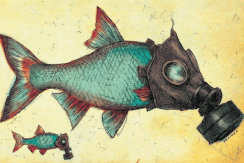
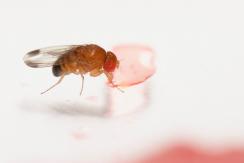
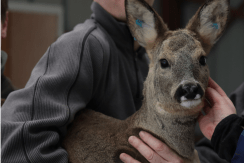
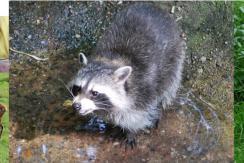
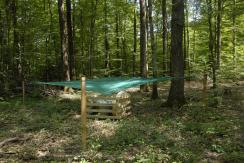
You also, comment on this article